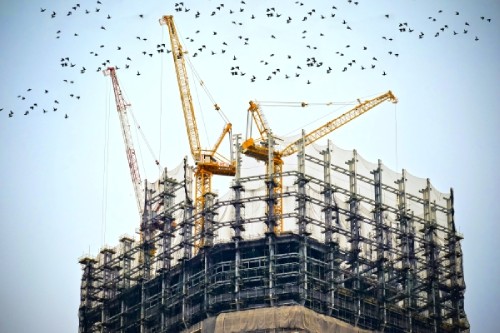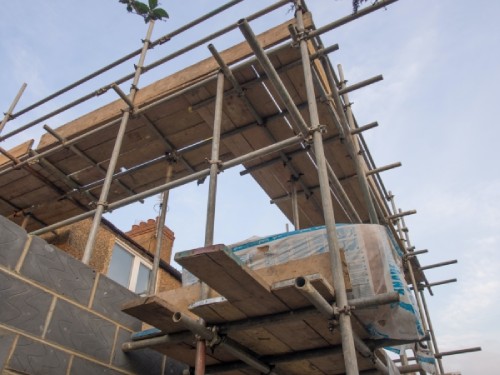
Right of light becomes a critical issue when building new structures that may block or limit the amount of sunlight reaching neighbouring properties. Both property developers and homeowners must understand the importance of right of light insurance, which protects against potential legal disputes and financial losses resulting from right of light infringements. By securing adequate insurance coverage, parties can minimise the risks associated with construction projects and ensure peace of mind throughout the development process.
Understanding Right of Light
Right of light is a legal concept that protects property owners’ rights to receive natural light on their land without obstruction. The concept has been recognised in UK law since the 18th century, with the first case law on right of light dating back to 1792. Over time, the law has evolved to provide greater clarity and protection for property owners, with the Land Charges Act 1972 and the Rights of Light Act 1959 being key milestones in the development of right of light legislation.
Infringement of right of light can occur in various scenarios during construction, such as when a new building or structure blocks sunlight from reaching a neighbouring property, or when an existing structure is modified or extended in a way that obstructs natural light. For example, if a developer builds a tall building that casts a shadow over a neighbouring garden, they could be liable for damages for infringing on the neighbour’s right of light. Similarly, if a homeowner extends their roofline to encroach on a neighbour’s skyline, they could also face legal action for violating the neighbour’s right of light. It is therefore crucial for property developers and homeowners to carefully consider right of light implications before undertaking any construction work.
An Overview of Right of Light Insurance
Right of light insurance is a specialised type of insurance that protects from potential legal disputes and financial losses arising from right of light infringements. The primary purpose of this insurance is to provide financial protection to the policyholder in the event of a claim by a neighbour whose right of light has been infringed upon due to a construction project.
Right of light insurance differs from other types of construction-related insurance, such as builder’s risk insurance or general liability insurance, as it specifically addresses the unique risks associated with right of light infringements. Key features of right of light insurance include coverage for legal fees, court costs, and damages awarded in a right of light dispute. Additionally, some policies may offer optional coverages, such as loss of rent or business interruption, in the event that a construction project is delayed or halted due to a right of light issue.
Why Right of Light Insurance is Crucial for Construction Projects
Without proper insurance coverage, property developers and homeowners may face significant financial risks in the event of a claim, including costly legal fees, court costs, and potentially substantial damages awards. Moreover, right of light disputes can lead to project delays, increased costs, and reputational damage, all of which can have a significant impact on a company’s bottom line.
There are several examples where right of light insurance could be particularly beneficial. For instance, if a property developer is constructing a high-rise building that may potentially block the view or natural light of adjacent buildings, right of light insurance could protect against potential claims. Similarly, if a homeowner is planning to build an extension to their property that may affect the right of light of their neighbours, insurance coverage could shield them from potential legal disputes. In both cases, right of light insurance can provide peace of mind and financial security, enabling property owners to proceed with their construction plans with confidence.
Assessing the Need for Right of Light Insurance

Assessing the need for right of light insurance requires careful consideration of various factors. Property developers and homeowners should start by identifying potential right of light issues in pre-construction planning. This involves examining the layout and design of the proposed structure, as well as its location and proximity to surrounding properties. Early identification of potential right of light issues can help prevent costly delays or legal disputes further down the line.
To accurately evaluate right of light risks, professional assessments and surveys are often necessary. These assessments can determine whether a proposed structure will infringe on a neighbour’s right of light, and if so, to what extent. They can also identify any existing easements or restrictions that may impact the project. Surveyors and experts in right of light law can provide valuable guidance on how to manage potential risks and avoid disputes.
Several criteria can help determine the necessity of right of light insurance for a project. These include the height and size of the proposed structure, its distance from neighbouring properties, and the orientation of windows and openings. Additional factors to consider include the age and condition of nearby buildings, as well as any existing rights or restrictions that may impact the project.
Obtaining Right of Light Insurance

It’s important to work closely with legal professionals who are familiar with right of light law when acquiring insurance. They can help review policy documents and ensure that the language and terms are clear and favourable to the client. Additionally, they can advise on how to navigate the claims process and represent clients in disputes with insurers.
When securing right of light insurance, it’s essential to understand the policy terms, conditions, and exclusions. Policyholders should carefully review the policy document to ensure they understand what is covered and what exclusions apply. They should pay particular attention to the policy limits, deductibles, and coverage period. It’s also important to note that right of light insurance typically only covers claims made after the policy has been purchased, so it’s essential to secure coverage before starting a construction project.
Best Practices in Managing Right of Light Issues
Managing right of light issues requires proactive measures to avoid infringements, effective communication, and negotiation strategies with neighbouring property owners, and integrating right of light considerations into construction project planning. Proactive measures include conducting thorough assessments of the property and surrounding area to identify potential right of light issues, consulting with legal experts to ensure compliance with relevant laws and regulations, and implementing measures to mitigate the risk of infringement, such as adjusting building designs or orientations.
Developers should consider the orientation and positioning of buildings, the height and density of structures, and the use of materials that may obstruct natural light. By incorporating right of light considerations into the design and planning stages, developers can avoid costly modifications later in the construction process and ensure that projects are completed on time and within budget.
Right of light insurance is a crucial investment for property developers and homeowners undertaking construction projects. It protects against the potentially devastating financial consequences of right of light disputes with neighbouring properties. By understanding the importance of right of light insurance, assessing the need for it, and following best practices in managing right of light issues, property owners can mitigate risks and ensure successful project completion. Don’t let a lack of insurance coverage leave your construction project vulnerable to costly legal battles – invest in right of light insurance today.

